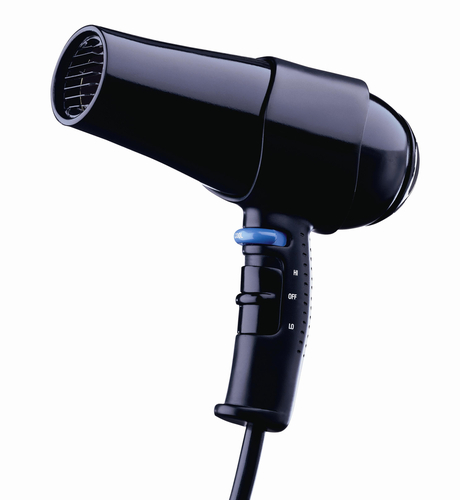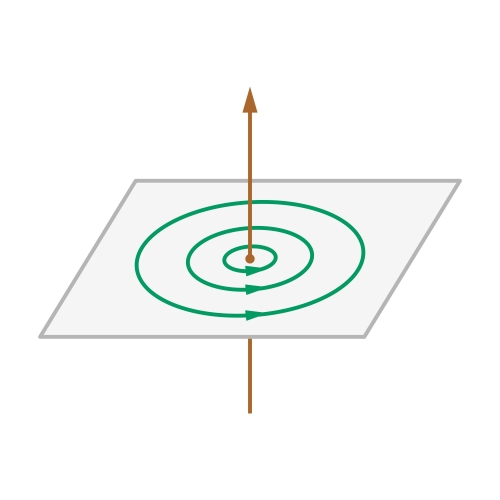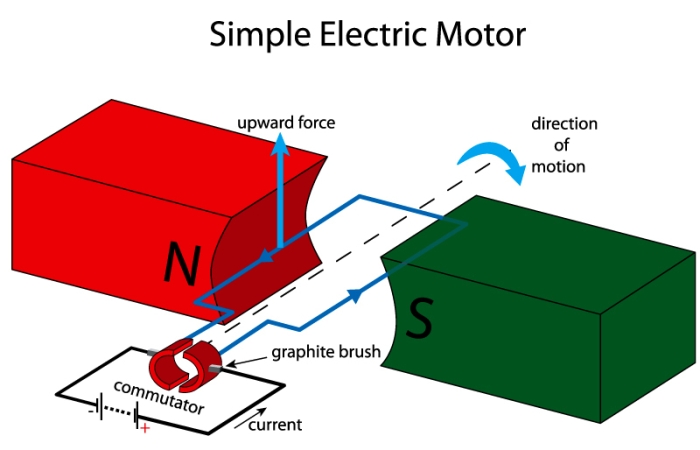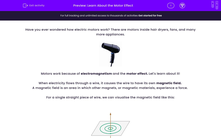Have you ever wondered how electric motors work? There are motors inside hair dryers, fans, and many more appliances.

Motors work because of electromagnetism and the motor effect. Let's learn about it!
When electricity flows through a wire, it causes the wire to have its own magnetic field.
A magnetic field is an area in which other magnets, or magnetic materials, experience a force.
For a single straight piece of wire, we can visualise the magnetic field like this:

Imagine that the current in the wire (the flow of charged particles) is upwards, through the vertical wire.
The magnetic field around the wire is circular. It is perpendicular to the wire (at right angles).
The field is anticlockwise. If the current was flowing in the opposite direction, the field direction would be the opposite, clockwise.
This fundamental principle of a magnetic field around a wire is what we use to make motors.
Let's put our current carrying wire near a permanent magnet. What will happen?

You might remember that when two permanent magnets are moved together, they attract or repel.
If opposite poles are moved together, they attract.
If like poles are moved together (e.g. south and south), they repel.
The same thing is true if a permanent magnet is close to a current-carrying wire. The permanent magnet and the current-carrying wire both have a magnetic field. When they are close together, the wire moves.
This is called the motor effect.
If a current-carrying wire moves when it is near a permanent magnet, we can use that property to design an electric motor.
A diagram below shows what this looks like.

We can see permanent magnets in place, with a north and south pole. We can also see a rectangular 'coil' of wire.
The wire is connected to a battery or power supply so that current flows through it.
In this diagram, the left side of the wire moves up. The right side of the wire moves down.
So, the wire spins clockwise.
The motor also has graphite brushes, which are conducting connectors, and a commutator. You don't need to know how the commutator works, but its purpose is to keep the motor spinning in the same direction.

We can make the motor spin in the opposite direction in two ways:
1. Reverse the direction of the current
2. Swap the permanent magnets the other way around
Now you can see one of the ways that magnetism is important to our day-to-day lives!
Let's try some questions.







